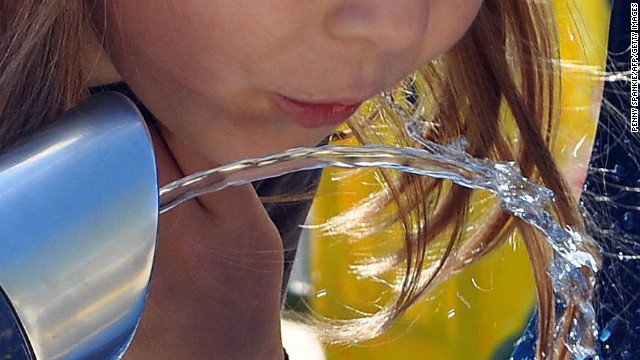
- Reduced population following the hurricane left most of the water sitting
- Chlorine levels in the unused water plummeted, allowing organisms to thrive
- Louisiana officials say water is safe to drink, but keep it away from the nose
A rare brain-eating amoeba that killed a 4-year-old boy in Louisiana may be a result of Hurricane Katrina.
Tests of St. Bernard Parish water supply confirmed the presence of Naegleria fowleri.
The water is safe to drink, state officials said, but cautioned against getting it in the nose.
Naegleria fowleri is found in hot springs and warm fresh water, most often in the southeastern United States. It enters the body through the nose and travels to the brain.
Katrina the culprit?
Experts say Hurricane Katrina, which hit the state in August 2005, may ultimately be to blame.
St. Bernard Parish — where the visiting boy from Mississippi was infected while playing on a water slide — was one of the main areas affected by the hurricane.
The reduced population following the hurricane left most of the water stagnant, which affected its makeup.
“One of the concerns is that it was such a drastic population drop after Katrina and the water aged … just by sitting in the pipes and also a drop in lower demand,” said Jake Causey, chief engineer for the state’s health and hospitals.
“The more quickly it is used up (the water), the more the water system is able to process a good chlorine system.”
If the water is not used, he said, the chlorine dissipates while organisms thrive.
“We are actively increasing the chlorine level in the parish water system combined with flushing the water system,” he said.
No danger in drinking, cooking
There is no danger of infection from drinking or cooking with contaminated water, according to the Centers for Disease Control and Prevention. Infected patients are diagnosed with primary amoebic meningoencephalitis.
Naegleria fowleri associated with disinfected public drinking water has caused deaths in only one other case in the United States, according to the CDC. The water came from an untreated drinking water system in Arizona; two children died there in 2003.
Flushing water lines
Parishes along the Gulf Coast began flushing water lines with chlorine last week.
The Mississippi boy contracted amoebic meningoencephalitis and died last month. Tests at the home where he was playing found the Naegleria fowleri amoeba.
Officials said less than 1% of patients survive the deadly brain infection, but an experimental drug from the CDC has shown promise in fighting it. Kali Hardig, a 12-year-old in Arkansas, survived after contracting the amoeba in July, possibly at a Little Rock water park.
The first symptoms of primary amoebic meningoencephalitis appear one to seven days after infection, including headache and fever.


Leave a reply